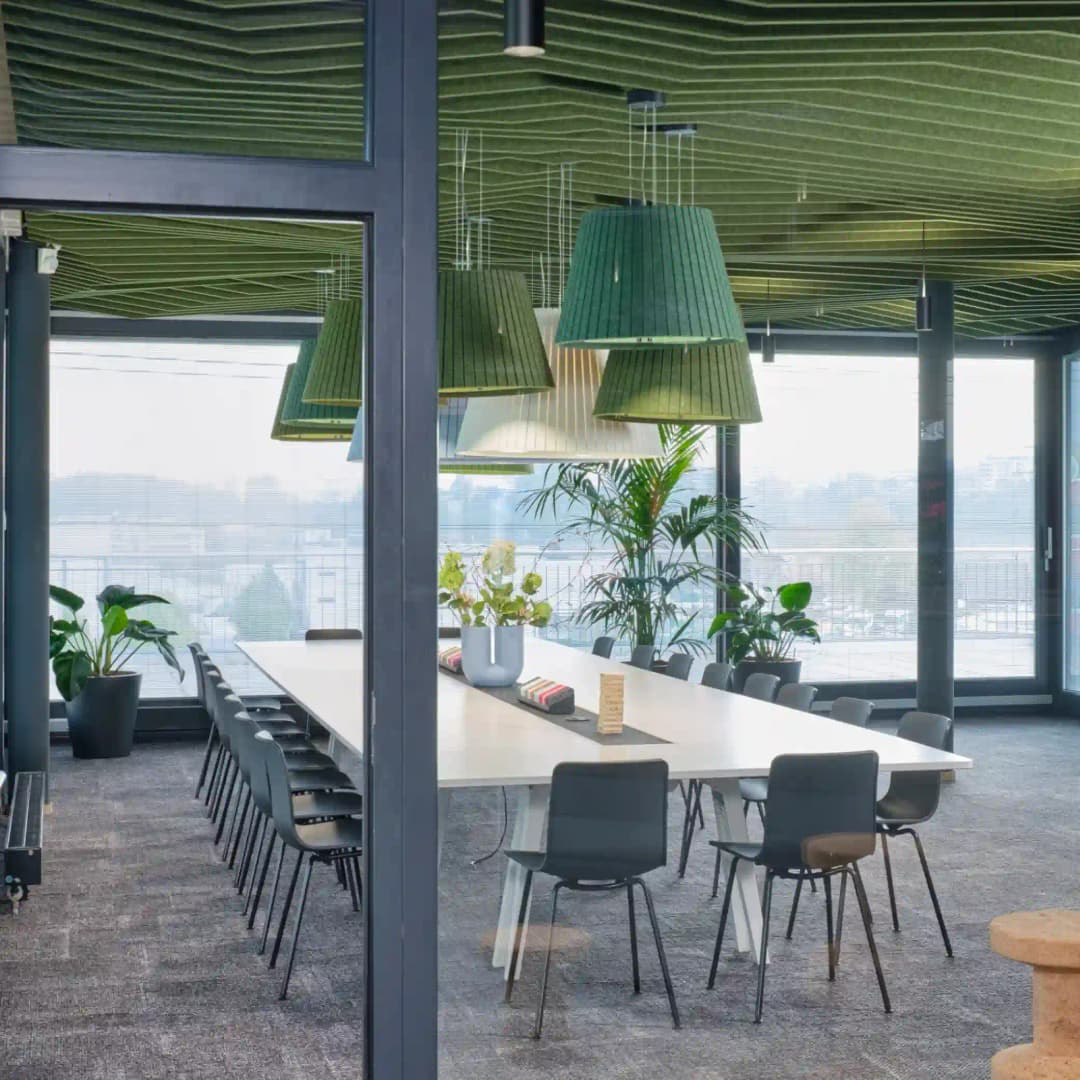Meeting room acoustics
Improve communication and the quality of conference calls
Book a Meeting room survey→Improving the acoustics in video conference rooms
In today’s professional landscape, the way we work has undergone a significant transformation. Video calls end up saving time and money for companies across all industries, and it’s the quality of these virtual meetings that is now crucial for doing business. The acoustics of meeting rooms are now under the spotlight.
The importance of meeting room acoustics
Hard, reflective surfaces in a meeting room can severely degrade the audio clarity of video conferencing systems. This results in poor speech intelligibility, straining to hear clients or colleagues. While it’s easy to blame audio-visual equipment for poor sound quality, the true culprit is often inadequate room acoustics.
Why acoustics matter on conference calls
Speech intelligibility: Clear communication is essential in meetings, especially when discussing critical business decisions. Hard surfaces cause sound waves to bounce around the room, leading to echoes and reverberations that make speech hard to understand.
Professionalism in communication: Good sound quality on conference calls projects a professional image and facilitates smoother communication with clients and team members.
Efficiency and productivity: Poor acoustics can lead to repeated explanations and misunderstandings, wasting valuable time. Effective acoustic design can minimise these issues and streamline meetings.



Common acoustic issues in meeting rooms
Reverberation time (RT60)
One key metric in assessing acoustics is the reverberation time (RT60). This is the time it takes for sound to decay by 60 decibels after the source has stopped. Rooms with high RT60 values cause sound to linger, creating a muddled and echo-filled environment.
Soundproofing vs. sound absorption
While soundproofing prevents external noise from entering a room, sound absorption focuses on improving internal sound quality. Both are crucial for a professional meeting room.
Ready to transform your meeting room? Contact us today to learn more about our acoustic solutions and how we can help you create the perfect meeting environment.

